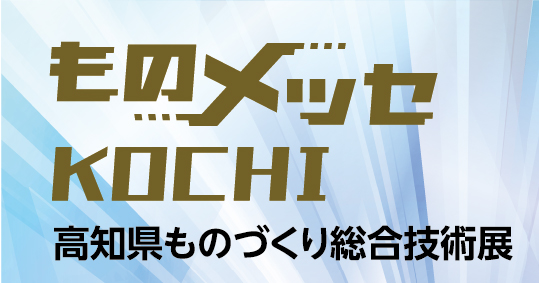"Change construction throughout the world through the Implant Method"
GIKEN LTD.

3948-1 Nunoshida
Kochi City, Kochi, JAPAN 781-5195
Tel: 088-846-2933
Fax: 088-846-2939
Founded: January 1967
Incorporated: January 1978
Homepage: http://www.giken.com/
<Main Business>
Development, manufacture, sale and rental of pollution-free construction method and industrial machinery
Consulting business for civil engineering and other aspects of construction in general
Research and development of civil engineering technology and methods
Overseas operations of above businesses
(Photo: Front view of the main office)
Aiming for pollution-free construction work

Our company has been promoting pollution-free construction since it was founded in 1967. Under the leadership of founder Akio Kitamura, we developed in 1975 the Silent Piler, the world's first pollution-free press-in and extraction machine for foundation piles. Using our own research and development system, the company proposed a series of new construction methods to construction firms around the world. The name Silent Piler is well known as one representing a pollution-free machine that has been used in over 30 countries. We are a developer and opinion leader of a "Construction Revolution" that promotes the proper way to do construction work.
(Photo: The first Silent Piler stands on display in the main factory. The latest model, the Silent Piler F301, is seen to the left.)
Challenging the traditional bad habits of the construction industry

Kitamura's dream of eliminating pollution from piling work continues. Ever since he started working at construction sites in his twenties, he has recognized that the noise and vibration from construction machines disturbs people, and he has felt sorry for that. The noise is produced at civil engineering and construction sites all the time. Everyone but Kitamura thought it was an integral part of construction work. He wanted to turn work sites into a noise-and vibration-free environment, so he formed his own company to challenge accepted practices by proposing innovative structures.
(Photo: President Akio Kitamura stands in front of a sculpture located on the patio of the main office. The work is by Katsuyuki Shinohara, known in the art world as Kuma-san.)
Construction Revolution

"The global construction industry is more conservative than I had imagined," Kitamura says. There are many parts of the construction business that continue the old ways of doing things and accept the necessity of doing business as usual. "Think of modes of transportation, for example. Automobiles and airplanes are developed according to progress in scientific technology. But in the construction industry, it is as if the companies are still traveling in a hand-carried palanquin," he says.
A typical example is seen in conventional footing structures for foundation work.
"Footings are just placed on top of the ground, where an earthquake and tsunami can easily destroy them. This is an old method from the time when there was no scientific technology, and it is still used in construction," Kitamura says. He then goes on to explain the need for Implant Structure (See Diagram 2), in which piles are pressed into the ground for the Earth to support them firmly, instead of just being placed on the surface of the ground (See Diagram 1).
"Footings are like dentures. Easy to fall off the gums. A dental implant works as if it is a natural tooth because the fixture penetrates into the bone, so the artificial tooth supported by the fixture is as strong as a natural one. The Press-in Method of the Silent Piler works by grabbing piles and pressing them into the ground instead of pounding them, enabling structures to be built with high precision and quality without making noise or causing vibration," says Kitamura, explaining the toughness of Implant Structure and the advantages of the Implant Method with Press-in Method.

<Diagram 1> Conventional Method to Build a Footing Structure
A large area is excavated to construct the foundation for a building and retaining structures. To make a concrete foundation called a footing, as seen in Diagram 1, requires a lot of working space, so the excavated area is wider than the foundation. Rubble stones are then laid and steel reinforcing rods are placed before the concrete forms are built. Concrete is poured into the forms, which are then dismantled, and the excavated soil is put back. Many steps are required in foundation work. As the work progresses, excess soil has to be removed from the site or backfilled. Neighboring properties also must be protected.

<Diagram 2> Implant Structure
The allowable structural members are pressed into the ground to be firmly supported by the Earth. They are the integration of the main structural members of buildings and walls and the underground foundations. The structure is completed simply by pressing the prefabricated members into the ground, so conventional foundation work is not required. It is not affected by the weather, and does not require steel reinforcing rods or concrete formwork either, enabling the construction period to be shortened and the cost to be significantly reduced.
Various types of Implant Methods
The following are various types of Implant Methods which our company continues to develop.

<Implant Levee>
This is a strong levee that can resist water overflow and ground liquefaction caused by a massive earthquake and tsunami because of the continuous walls of steel sheet piles and steel pipe piles that are pushed into the ground by the Press-in System.

<Super Implant Levee>
This is an Implant Levee using steel pipe piles of higher than usual rigidity. Large-diameter pipes are used so the internal space can be effectively utilized as bicycle parking spaces, warehouses, emergency shelters in times of disaster, and other purposes.

<Implant Revetment for Industrial Complex>
Industrial complexes can be protected by using the Press-in Method to build continuous walls of steel pipe piles in front of an already existing protective levee. This protects industrial complexes from ground liquefaction caused by an earthquake, tsunami or high tides.

<Implant Watertight Levee>
A Tide Prevention Levee is a wall using large-diameter steel pipe piles pressed into rocky ground by the Rotary Cutting Press-in Method and further strengthened with angled suspending piles to prevent the wall from leaning. It is used to protect chemical plants and nuclear power plants from tsunami and high tides.

<Implant Seismic Embankment>
Conventional embankment structures destroy nature and the ground, and consume an enormous amount of money, time and energy, but an Implant Seismic Embankment can be built quickly with the least possible space required for a sturdy structure with anti-seismic capabilities. It allows the inner space of the embankment to be used for other purposes so that area won't be wasted.

<Lateral Implant Road>
This is a road built laterally by the Press-in Method in rocky ground in mountainous areas. No support for the road is necessary. It looks as if the road comes out of the mountain surface. This method does not destroy the area underneath the road, and the slopes of the mountains can be restored easily by removing the road when it is no longer needed.

<Underwater Implant Wall>
The continuous walls built by Implant Structure are integrated into the existing bridge supports by wrapping them around when performing work to reconstruct the bridge's functions and reinforce its anti-seismic capabilities without disturbing traffic.

<Implant Pod>
This is an emergency evacuation facility with a floating shelter connected to the columns built by Implant Structure in case of tsunami and high tides. A simple structure that is inexpensive to install, it can be used for emergency evacuations in flat coastal areas and can also serve as a disaster prevention facility for companies and other local businesses.
Automated underground parking systems for automobiles and bicycles


(Diagram: ECO Park)
(Photo: ECO Park installed at the main office of Giken Ltd.)
We have developed ECO Park and ECO Cycle, underground parking facilities for automobiles and bicycles, respectively, under the concept of "Culture Aboveground, Function Underground." Both systems effectively use underground space which has cylindrical implant foundation walls built as a building frame with the Press-in Method.
The loading and unloading of vehicles is automatically controlled by computer so both types of facilities are easy to use. Waiting time for loading is 25 seconds on average for cars and 13 seconds for bicycles. They have a parking capacity of 50 spaces for automobiles and 204 spaces for bicycles.
The facilities are easily installed close to designated sites, and the aboveground space can be used as a green zone providing amenities to urban areas. The cylindrical implant foundation walls underground also work as a supporting frame for buildings, making it possible to use multiple-layered and high-added-value urban spaces effectively.


(Diagram: ECO Cycle)
(Photo: ECO Cycle installed at a student dormitory of Kochi University of Technology)
Portable bicycle parking system using the "Mobile ECO cycle"


The portable "Mobile ECO Cycle" bicycle parking system was developed by applying the bicycle storage technique of ECO Cycle facilities. It is space saving system that is easy to install and remove. It satisfies various bicycle parking needs with flexibility, regardless of location, including train stations and bus stop areas, shops, schools, public facilities, multiple housing units, factories and even at some events.
The system provides parking spots for 58 bicycles and requires a space of 6.74 x 6.74 m (about 46 sq. meters). Installation takes one to two days, while removal can be done in one day.
Levee built by the Implant Method along the coast of Tosa Bay


(Diagram: A cross-sectional drawing of a levee built using the Implant Method)
(Photo: Levee of Nino Kaigan Beach in Kochi City being refurbished)
As a result of the immense damage caused by the Great East Japan Earthquake, discussions about countermeasures for earthquakes predicted in the Tokai, Tonankai, and Nankai regions have become more frequent in many municipalities. Meanwhile, a levee our company built using the Implant Method has been completed on the Nino Kaigan Beach in Haruno-cho, Kochi City. It is a 710-meter-long levee on Route 14, also called the Kuroshio Line, on the east side of the Niyodogawa Kako Ohashi Bridge. A levee had already been built at the same location, but was in danger from ground liquefaction caused by a possible quake. A committee of experts decided to use a method in which dual steel sheet piles would be pressed into the levee. This was the first time in Japan for the Ministry of Land, Infrastructure, Transport and Tourism to reinforce a levee using Giken's Implant Method.
The same type of work is now underway for a levee along Route 23 toward Usa on the west side of the Niyodogawa Kako Ohashi Bridge. The length of the levee is 1.5km. It is scheduled to be completed in summer 2014.


(Left Photo: Levee of Nino Kaigan Beach in Kochi City being refurbished)
(Right Photo: Levee of Nino Kaigan Beach in Kochi City after being refurbished)
Foundation of International Press-in Association (IPA) and promotion of Press-in Engineering

International Press-in Association (IPA)
The IPA promotes research activities, under the name of Press-in Engineering, to scientifically investigate underground phenomena related to press-in piling. The researchers and specialists are from various engineering fields, including environmental, mechanical, construction, instrumentation, geotechnical, civil, structural, and urban, and meet jointly on a periodic basis. It is the only international academic organization to research and shed light on underground phenomena by scientific verification. The research section provides information on topics related to research activities of the IPA. Kitamura was the driving force behind establishing the association, and the inaugural meeting was held in Cambridge, England, in February 2007. Many university professors and specialists are members of the board, and Kitamura and Dr. Hajime Okamura, chairman of the board at Kochi University of Technology, hold honorary posts.
The IPA organizes and conducts workshops and seminars to give researchers the opportunity to exchange technical information and support research on the Press-in Method. It hosts the annual IPA Press-In Engineering Seminar in Kochi each July. A total of 232 participants from 12 countries attended in 2013. Kitamura continued to speak about his dream of making Kochi a Mecca of the Press-In Method, so when people think of the Press-in Method, they will regard it as "Originated in Kochi."
Disaster prevention readiness in Kochi Prefecture
(Photo: The Orikasa area of Yamadamachi, Shimohei-gun, Iwate Prefecture, lies in ruins after the Great East Japan Earthquake in March 2011. Though the town was completely destroyed, the water gate and Dual Sheet Pile Cofferdam, seen at the left of the photo, withstood the terrible power of the quake and resulting tsunami)
"I have been offering to build watertight levees by the Implant Method at nuclear power plants since 2000. If the proposal had been accepted, the devastation of Fukushima could have been avoided. I deeply regret that and am sorrowful about it." Kitamura says. The Dual Sheet Pile Cofferdam installed by the Implant Method in Yamadamachi, Shimohei-gun, in Iwate Prefecture remained intact after the Great East Japan Earthquake, fulfilling its protective purpose. Kitamura feels deep regret that his proposal for building such levees along the coastline near nuclear power plants was not accepted by government authorities.
Commenting further about anti-disaster countermeasures in Kochi Prefecture, Kitamura says:
"We have historically experienced a number of water disasters in Kochi, such as typhoons, tsunami and floods. Everyone who lives in Kochi feels the need to strengthen the prefecture's anti-disaster countermeasures, but such infrastructure has not been built yet. Learning from the past and forecasting large-scale earthquakes in Japan, Giken believes installing anti-disaster countermeasures to be our primary line of business." Looking back at the development and proposal of work based on Giken's technology, if the Implant Levee along the Kokubu River had been built, there wouldn't have been such devastating damage in Otsu, Kochi, when it was struck by terrible flooding in September 1998. The more you hear Kitamura talk, the more you get frustrated by the government's lack of preparedness for natural disasters.
Kitamura continues with determination:
"Nothing changes when a bureaucracy merely follows precedent. Our company has done everything by ourselves, from having ideas and developing them to financing and market development, including structure designing and providing materials for cost estimation. But every time we have proposed new projects and ideas, the construction industry and government have kept their distance from us, or even persecuted us. Even then, we did not give up, but continued to develop pollution-free machinery and kept proposing their use. After almost 40 years since the invention of the Silent Piler, finally, for the first time, it was recognized by the government with the project of reinforcing the embankment of Nino Kaigan Beach. I feel deep emotion when I confirm that the Construction Revolution which our company has been persistently trying to bring about was justified. I want to continue promoting the introduction of higher-level and more perfect machinery, and further improve the construction industry around the world."
Lastly, Kitamura spoke about a surreal suggestion he has, illustrating it with a drawing of an Implant Levee. "If we build a 42.195km-long Implant Levee with a road on top along Tosa Bay, it can also work as a marathon course. There is no need for traffic control when there is an ekiden (long distance race) or marathon. Being able to hold world-class races will energize Kochi Prefecture." It is such an exciting plan for the residents of Kochi.
(Diagram: Illustration of a proposed Implant Levee with a road on top. If this kind of levee is built, it can be used as an ekiden (long distance race) or marathon course in addition to a disaster prevention facility.)
Aiming for ideal state of the construction industry from the taxpayers' point of view


"In 1994, Giken came up with the answer to the question, 'What is the ideal state of the construction industry from the taxpayers' point of view?'" Kitamura says. It is shown in the five-sided chart demonstrating the defined relationship among the five elements in construction: Environmental Protection, Safety, Speed, Economy, Aesthetics.
<Five Construction Principles>
Environmental Protection: Construction work should be environmentally friendly and free from pollution.
Safety: Construction work has to be carried out in safety and comfort by a method implementing the highest safety criteria.
Speed: Construction work should be completed in the shortest possible period of time.
Economy: Construction work must be done rationally with an inventive mind to overcome all constraints at the lowest cost.
Aesthetics: Construction work must proceed smoothly and the finished product should have a cultural and artistic flavor.
Giken has succeeded in giving numerical values to those elements. We have been advocating that decision making in construction work be made based on a public consensus and according to the five principles. We continue to develop construction methods and machinery that can objectively be used in compliance with the five construction principles and at a numerically high level.






























